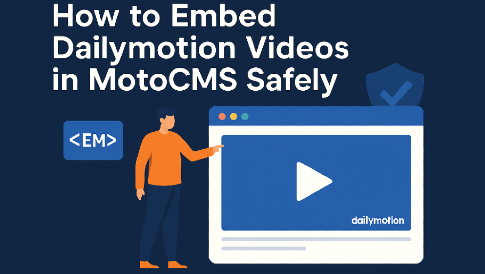How to Develop a Content Strategy that Suits Your Brand – A Step-by-Step Guide
Your content marketing strategy ultimately decides the fate of your online business, and that forms a huge chunk of your sales, even if you are selling your product/services offline. If you still haven’t developed a content strategy for your business, then bear in mind that you are depriving your business of amazing benefits. Content marketing can do wonders for your business; it can improve engagement and increase sales simultaneously! It probably sounds like a magic potion that can fix all your issues overnight, but if it were, wouldn’t all brand be successful? This is why marketing experts suggest that your brand strategy should be carefully designed to suit your brand.

What Is a Content Strategy?
For starters, let’s try to understand what exactly is a content strategy and, more importantly, why do you need it for your business? You can think of the content strategy as the rule book you define for your business to research, develop, and finally publish the content. Your content can be in the form of videos, graphics, or simple text.
However, a lot goes into a content strategy than mere graphics; there is a strategy that ultimately helps businesses increase their engagement and acquire more leads. When digital marketing is massively popular, there is massive competition in the market to be better than the competitors.
What will truly set your brand apart is quality content. Quality content is a lead generation magnet and helps your brand gain visibility on Google’s top search engine page results.
Why Does Your Brand Need A Solid Content Strategy?

At the end of the day, it all comes down to one thing: How many leads are you successfully converting in a said amount of time. Your content is a driving force that helps potential clients convert to existing clients; it helps them solidify their decisions. A content strategy helps you finalize the following:
- The keywords that you need to work on.
- The tone used in your content.
- Where and when to mention your products.
- Where to include relevant CTA’s.
Creating content without a purpose is as good as nothing; try to tell your audience that you are there for them when they need you the most. That’s why you need a skilled content team that understands your goals and audience. But if you don’t have a content team you can always outsource companies who specialize in custom content services. Offer them meaningful content that tempts your audience back to your channel. If you are struggling with developing a content marketing strategy, then our step-by-step guide can help you find your way!
A Step-by-Step Guide Content Strategy Guide
Step 1 – Define Your Content Marketing Goal
You are nowhere, and I repeat nowhere if you haven’t created a content marketing goal for your brand. It’s relatively simpler to develop content and schedule it. The hard part is to measure the outcome, whether you are getting something out of it in monetary terms or not. It also depends on the metrics that you wish to measure. These metrics can be website-related, or maybe you are looking for new subscribers, conversions, or the number of engagements you are getting on your posts.
Your goals do not have to be stagnant either; they can change over time as well. However, initially, you need to be sure of what you want to measure. The sale is an integral part of any business, but many elements make it all happen. You might be focusing so hard on sales that you completely forget how to keep the audience engaged. Having a purpose is crucial for building any strategy as it helps clarify what you want to achieve, how to achieve it, and how to measure success.
Step 2 – Understand Your Audience

Even if your goals are changing over time, having a unified purpose is essential. This brings us to our next step that is understanding your audience. As a brand owner, have you ever asked yourself why you are creating content in the first place? To fill your social media platforms? There is a whole mechanism that runs in the background, and most of us ignore it, thinking that it is not important enough.
There is a whole cycle that goes into a person landing on a single piece of content you are putting out there. Suppose a reader ends up at the blog post that you recently published. The entire process of converting that reader into a subscriber and eventually a paying customer is the purpose of that blog post.
Measuring the number of readers you are successfully converting is one of the many marketing metrics that can help you make powerful decisions. But hold on, what if the person who lands on your blog post is not even interested in the kind of content you are providing in the blog post? The whole effort will go to waste. Worst-case scenario, the reader might even leave your site in frustration! This is why marketers emphasize producing relevant content, and you cannot create relevant content unless you know your audience.
The two major aspects of understanding your audience are understanding the demographics and your target audience’s psychographics. Demographics include measurable traits such as age bracket, gender, area of residence, designation, etc. At the same time, psychographics refers to the personality types, what interests your audience, their beliefs, etc. When creating content, it is important to be aligned with your audience’s beliefs and refrain from posting content on sensitive and controversial topics. Offending your audience is the last thing that you want for your brand!
Step 3 – Deciding the Tone of Your Content
The tone of your brand is the truest reflection of your brand’s personality. Picking the tone of your content is one of the many steps that go into content creation. Your tone will most likely be set by your business’s nature and the products/ services you are selling. If you already keep an eye out for content, you would have noticed that serious businesses set out a very formal tone. In contrast, a business that sells candies would have an enjoyable and quirky layout to attract kids.
Once you have narrowed down your audience, it will be easy for you to understand what tone your content needs to be. It is also important to communicate with your team members about your content’s tone so that everyone is fully aware of your brand’s content goals and creates content that aligns with those goals. Keeping consistency in your content also plays an important role in keeping your audience engaged.
Step 4 – Creating a Blog

If you don’t already have a blog, now is the time to do it. Luckily, you don’t have to be a pro at coding to develop your blog. Sites like WordPress and strikingly have made it relatively easy to create your blog posts and publish them. You no longer have to rely on a web developer to do the job for you. More than 50% of marketers agree that blogs are one of the most effective mediums of enhancing customer engagement and eventually converting them. The blogging industry has massively grown in the past few years and is expected to grow even more in the future. Blogging is a big boost for your brand’s SEO, and through the right keywords (discussed in the next step), you can improve your website’s ranking on the SERP’s.
Step 5 – Finding the Relevant Keywords for Your Brand
The term blogs and keywords go hand in hand. There is a powerful connection between the two, which cannot be ignored. Finding the relevant keywords is probably the oldest trick in the book and is the most effective one. When someone types a query on Google, they are using keywords to do searches. Users generally don’t even realize that they are typing in keywords, but keyword searches are based on – the strings that people use to type into their search engine boxes.
There are several online tools such as Uber Suggest or Google’s Keyword Planner that can help you find the right keywords that are relevant to your brand. There are other tools and extensions, such as MOZbar and Keywords Everywhere, that can be used to analyze the keywords that you wish to incorporate into your content.
Once you have found the keywords directly associated with your brand, you can find long-tail keywords, too, which will further improve your ranking on SERPs. Different keywords work differently for different niches and stages on the marketing funnel. For example, if you are engaged in SaaS content marketing, your content and keywords choice for the top level of your marketing funnel should be educative. But as you get to the bottom, your content and keyword choice should focus more on conversion. By this time, the customer knows what they want but may only need a little convincing that your product is the best option.
It is generally harder to rank on competitive keywords as they are used most extensively by people, and everyone would want to rank on them. Therefore, try to find keywords that narrow your audience based on the kind of product/service you are selling.
Step 6 – Design a Spreadsheet Based On the Keywords

Once you have compiled a list of all the relevant keywords, including the long-tail keywords, you need to design a spreadsheet for every topic. You can create a template then add on to it as you mature your content strategy even more. You can develop the format of the spreadsheet based on the requirements of your project.
The spreadsheet may contain keywords so that you know where to begin when you start creating content. This spreadsheet is also a crucial step because you will ultimately share this spreadsheet with your team. The more organized it is, the easier it will be to have everyone on the same page.
Step 7 – Creating an Email List
It simply doesn’t end at content creation only – the content also needs to be presented to the right people. This is why it is important to create an email list. An email list is an important asset for your business. It allows you to communicate directly with your audience and develop a relationship with them on a personal level. People spend several hours logged onto their email accounts. Giving your audience a scoop of entertainment through your content might make them permanent subscribers to your social channels.
There are generally three types of emails that are sent by the brand in terms of email marketing.
- Newsletters/ General Emails: Newsletters are released to create general awareness about your brand and are usually sent to everyone on your list. This is also done by businesses at an earlier stage when they don’t have a huge email list, and they are trying to spread the message in the best way possible.
- Targeted Emails: As your email list grows, you will need to create segments as you will now have to focus on sending the right message to the right people instead of sending it out in bulk. Using an Email Service Provider such as MailChimp or Active Campaign can help you categorize your audience based on their demographic and psychographic preferences.
- Automated Emails: These messages are sent out to specific people in response to an action. For example, a welcome message to a new subscriber or a confirmation email to someone who has just placed an order with you.
Step 8 – Decide Your Content Channel
Email is only one way to communicate with your audience. It would help if you defined several other channels to promote your content. Do bear in mind that a content channel that works for one brand might not be suitable for yours. It would be best to find out which channel or social media platform is fulfilling your content goals. You can do this analysis by using different marketing metrics. Once you have decided on the platform, you can start publishing!
Content Strategy – Bottom Line
Remember that your content strategy cannot be successful until you have a successful plan to execute it. Without a plan, your content will be all over the place, and even the best posters and videos might not be able to reach the target audience. Our step-by-step guide will help you craft a powerful content strategy that will help you fulfill your content goals in no time!




Everyone loves what you guys are usually up too. Such clever work and reporting!
Keep up the wonderful works guys I’ve incorporated you guys to our blogroll.